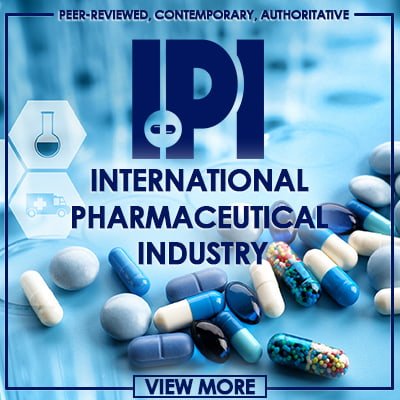It is still attempting to resolve the fundamental issue.
In general, Mark Cuban’s new online pharmacy is delivering on its promises of offering low savings on hundreds of prescription medications.
The issue, according to experts, is where it still falls short.
With more than 800 generic medications available, Cost Plus Drugs, which debuted in January, provides far more affordable costs than most retail pharmacies. These medications treat prevalent illnesses including cancer, dementia, and leukaemia, among others. Imatinib, a leukaemia drug with a retail cost of more than $2,500, is available from Cost Plus Drugs for about $14.40. Regardless of whether you have health insurance, that cost applies to everyone.
The project seeks to reduce America’s soaring cost of prescription drugs: According to a 2021 survey by Gallup and West Health, 18 million Americans, or 7% of American adults, were unable to pay for at least one medication that was recommended to them by a physician.
In a perfect world, Cuban’s pharmacies would upend the whole pharmaceutical sector and lower medicine prices nationwide. But according to analysts, Cost Plus Drugs’ influence is now limited since it hasn’t penetrated the brand-name medicine industry, which is what drives the excessive pricing.
As much as I support the initiative, Gabriel Levitt, president of consumer protection organisation PharmacyChecker, says that “what they’re doing does not address the big elephant in the room.” Levitt explains that “It’s brand-name drugs that are increasing in price every year and forcing millions of Americans to cut back on medications or not take them at all.”
Here are some areas where Cuban’s cost-cutting pharmacy is succeeding so far and why experts think it isn’t yet a fix for America’s issue with prescription medication prices:
How the Cost Plus Drug model functions
When a pharmaceutical company develops a novel recipe, it obtains a patent that forbids other businesses from manufacturing or marketing it. These patents typically endure for 20 years, after which other businesses may begin producing generic copies of the brand-name medication.
According to Dr José Pagán, chair of the school of public health policy and management at New York University, Cuban’s pharmacy is now focused on reducing the costs of those generic medications by avoiding individuals known as “pharmacy benefit managers.”
Pharmacy benefit managers effectively function as intermediaries, negotiating with pharmaceutical companies on behalf of health insurers, sizable employers, and other parties with whom they have contracts. Even though their role is to negotiate discounts or rebates, Pagán claims they are frequently blamed for raising the pricing of cheap medications to increase profits.
To obtain generic medications at wholesale pricing, Cost Plus Drugs negotiates with manufacturers directly rather than via those pharmacy benefit managers. According to the pharmacy’s website, it then offers those medications to customers with prescriptions for a 15% markup, $3 for pharmacy labour, and $5 for delivery.
Cost Plus Drugs makes a compromise by refusing to accept insurance claims because insurance companies seldom cooperate with pharmacies that do not use pharmacy benefit managers.


Why name-brand medications are such a problem
Drug patents provide businesses with more than simply exclusive selling rights. They permit drug makers to set their prices for the sale of their products.
Despite having a far lower proportion of prescriptions than generic pharmaceuticals, brand-name drugs accounted for about 80% of prescription drug spending in 2018. According to the U.S. Food and Drug Administration, generic medications are typically between 80% and 85% less expensive than their brand-name counterparts.
According to Inma Hernandez, an associate professor at the Skaggs School of Pharmacy and Pharmaceutical Sciences at UC San Diego, drugmakers often only accept less money for their brand-name medications when they issue rebates to those pharmacy benefit managers.
The likelihood that patients will be given certain treatments is increased when the intermediaries publish the pharmaceuticals on a formulary, which is effectively a list of favoured medications for insurance plans. According to Hernandez, when patients pay full price for certain prescriptions, the middlemen receive a rebate and split the money they make with the insurance providers that hired them.
Lower insurance costs are a future indirect benefit that patients will experience, says Hernandez. Her issue is that pharmacy benefit administrators don’t always transparently disclose their rebates. Only the pharmacy benefit manager is aware of how much of the discount is passed on to insurers and subsequently patients, according to the spokesperson.
Formularies cannot and do not exist in pharmacies. Hernandez points out that this provides little to no motivation for medication companies to issue Cost Plus Drugs rebates.
It is still preferable to make some progress than none at all.
Cuban claims that Cost Plus Drugs is aggressively addressing the issue and expects to start selling name-brand medications “within six months.” He continues, “We are not ready to announce anything,” but that’s a broad schedule.
Theoretically, if Cuban’s drugstore can amass a sizable enough user base to compete with major insurance providers, drugmakers may be persuaded to provide rebates. Cuban said several branded medicine producers have already begun cooperating with Cost Plus Drugs in a PBS News Weekend programme from last month.
However, Cuban’s ambitions are still unclear, at least publicly, and there is a very real danger that the drugstore won’t be able to compete with the insurance sector.
Cost Plus Drugs is still having an effect. Professor of health policy Cindy Thomas of Brandeis University expresses “pleasure” with the pharmacy’s actions. It benefits a sizable portion of Americans who still require generic medications and is especially beneficial to those who are uninsured, underinsured, or have high deductible insurance plans, according to the expert.
In a 22,000-square-foot plant in Dallas that is scheduled to open by the end of this year, Cost Plus Drugs will soon produce its generic medications as well. Thomas asserts that the plant may enable Cuban’s pharmacy to provide its generic medications for significantly lower prices.
According to Thomas, “I believe [Cost Plus Drugs] will remain in the business, and I hope it does.” “Even if it’s just generics for now, now is a fantastic time to disrupt the pharmaceutical sector and find a method to cut prices.”












